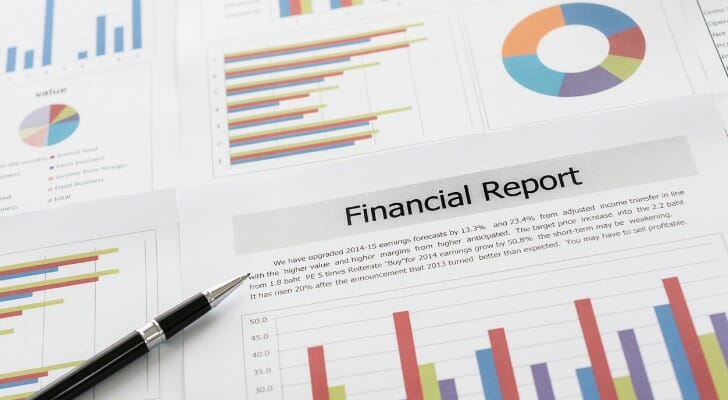EDGAR, which is short for Electronic Data Gathering, Analysis and Retrieval system, is a massive U.S. government database on the finances of publicly traded corporations that is free to the public. Overseen by the Securities and Exchange Commission (SEC), it holds millions of filings, not just from corporations but also from mutual funds, money market funds, exchange-traded funds (ETFs) and variable annuities issued by insurance companies.
EDGAR by the Numbers
EDGAR provides anyone with a computer and connection to the internet with free access to a vast array of information, both current and historical, on corporate finances and operations, as well as related facts like the number of shares held by insiders such as company executives and board members. You can also learn about transactions when insiders buy or sell shares.
EDGAR began in 1984 as a $30 million pilot project by the SEC. The goal was to replace the outdated, cumbersome method of distributing paper filings by microfiche to SEC public reference rooms, where investors researching companies had to print documents a page at a time. The pilot was gradually expanded and beginning in 1996 all companies were required to submit documents electronically to EDGAR.
Since then EDGAR has become a truly enormous database of public company filings with tens of millions of documents dating back to 1994 available to researchers. Each year, the system serves up approximately 3,000 terabytes of data. Each terabyte is equal to a trillion bytes of data. About 3,000 filings arrive daily and 40,000 new filers submit documents every year. Once filed, documents are immediately available to anyone with a computer.
What Information Can You Find on EDGAR?

EDGAR contains many different types of filings from the entities that report to the SEC. In a typical year, the SEC catalogs nearly 400 different varieties of documents received through EDGAR. The filings range from a Form 1-A, from companies requesting an exemption to reporting requirements for a public offering, to Form X17A-5, an annual audited financial statement by broker-dealers.
The major types of filings include these:
- Form 10-K: annual reports from publicly held companies, including audited financial statements and management’s discussions of the prior year’s results
- Form 10-Q: quarterly public company reports including unaudited financial statements and management discussions of the quarterly results
- Proxy statements: reports to shareholders about matters that will be put to a vote in an upcoming shareholder meeting
- Form 8-K: reports on events of significance to the corporation and its investors that call for disclosure before the next quarterly report
EDGAR reports contain information on individuals as well as companies and funds. For example, the amount and type of financial compensation provided to executive officers and board members is disclosed in reports filed on EDGAR.
Reports also reveal the number and percentages of shares owned by corporate insiders. This includes officers, directors and people who own more than 10% of any class of shares. Plus, insiders must report any buying or selling of company shares within two days of the transaction.
How to Use EDGAR
EDGAR documents reflect the SEC’s regulatory mandate. Investors can get access to the database from the SEC’s home page on the web. No fee or registration is required. Investors can search for a company by the company’s name or ticker symbol. Results are displayed in chronological order, with the most recent first.
In order to see the filed documents, researchers have only to select the filing they are interested in from the list of a company’s recent filings. Documents can be viewed online, downloaded or printed out. Users can select the format they wish to see as well.
Documents filed on EDGAR are primarily in plain text or HTML format. Today the SEC is gradually requiring an increasing number to be submitted using Inline extensive Business Reporting Language. Filings that use this standard structured data format can be automatically read and analyzed by software. This allows investors get more detailed and faster insight into their investments.
EDGAR is rolling out advanced search tools. These include full-text search of the entire database using keywords and phrases, Boolean phrases and other tools.
Bottom Line

EDGAR is a free, public online database of all the documents filed to the SEC by public companies over the last quarter century. Any investor with a computer and online access can use EDGAR to see audited annual financial statements, quarterly reports, insider holdings and other useful information about ETFs, public companies and mutual funds. The SEC also requires foreign governments and companies to file financial reports via EDGAR. Third-party filings with respect to these companies, such as tender offers and Schedule 13D filings, are also filed via EDGAR.
Tips for Investors
- A financial advisor can help you build an investment strategy for your portfolio. Finding a financial advisor doesn’t have to be hard. SmartAsset’s free tool matches you with up to three vetted financial advisors who serve your area, and you can interview your advisor matches at no cost to decide which one is right for you. If you’re ready to find an advisor who can help you achieve your financial goals, get started now.
- A corporation’s annual report may be thought of as a simplified version of its 10-K. Knowing how to understand what’s in an annual report can be useful as you consider investing in a corporation.
Photo credit: ©iStock.com/damircudic, ©iStock.com/utah778, ©iStock.com/jxfzsy
